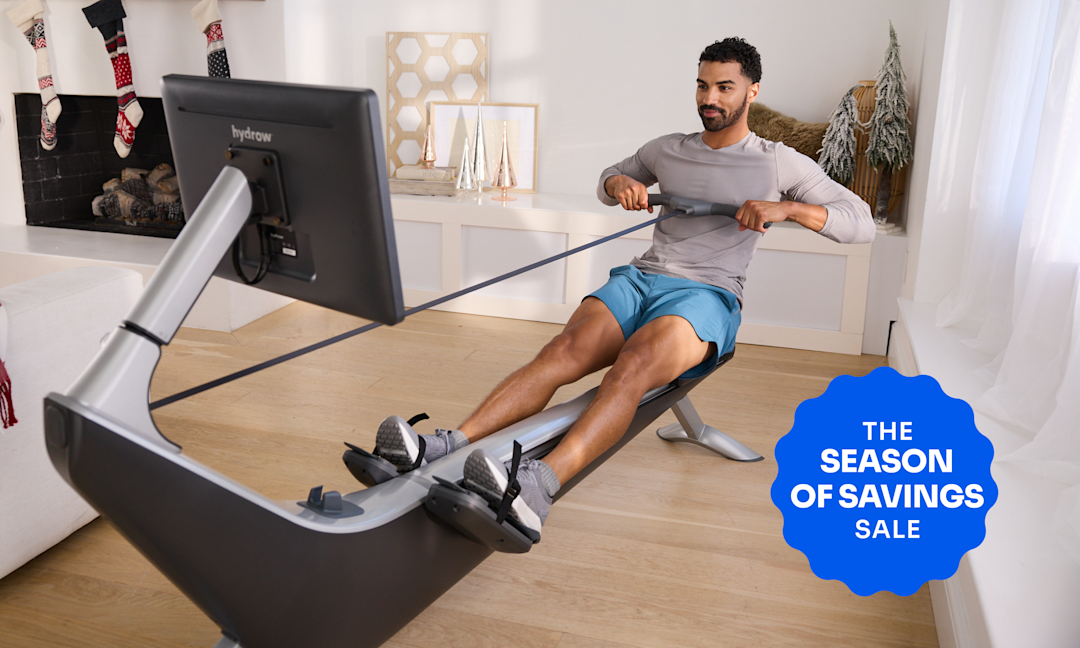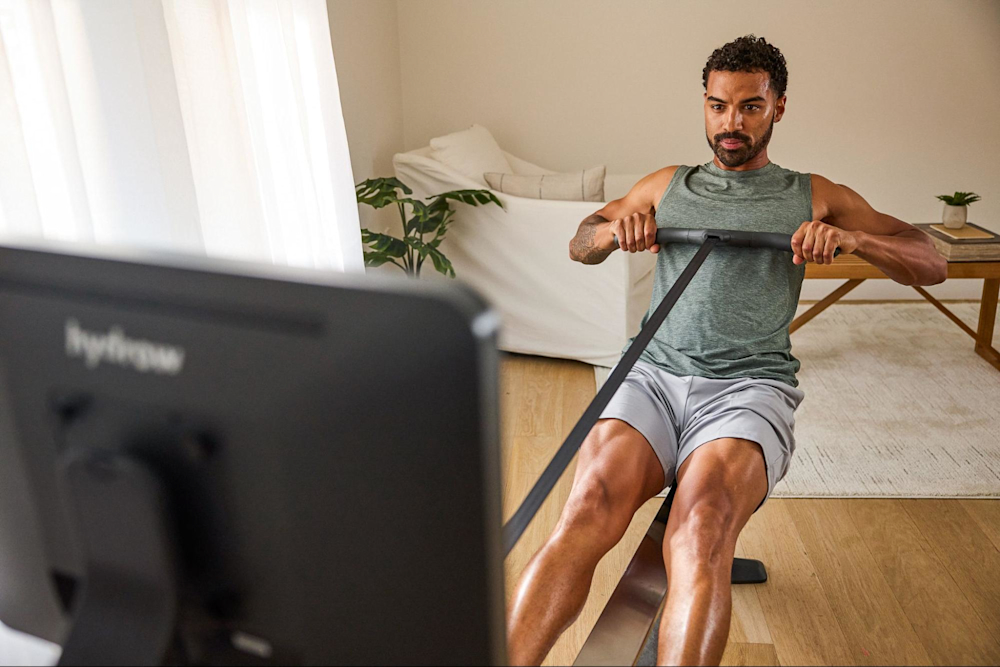Heart Rate Zone Training: Everything You Need to Know

Using all the heart rate zones in your exercise program can improve your overall fitness. Different zones accomplish different things for your health, and monitoring your heart rate helps you regulate your workout intensity levels so you don’t train too hard—or not hard enough.
As they relate to physical activity, heart rate zones are ranges based on percentages of an individual’s maximum heart rate. They’re usually used to measure the intensity level of exercise or other everyday activities. The American College of Sports Medicine (ACSM) identifies five zones that range from Very Light to Maximum effort.
As with most things fitness-related, variety is key. You’ll want to use all—or most—heart rate zones in your program to maximize the benefits.
If you’re looking to incorporate heart rate zone training into your fitness routine, this blog will discuss everything you need to know, including:
Let’s jump in!
Your guide to the five heart rate zones
The five ACSM heart rate zones are:
Zone | Intensity Level | Percentage of Maximum Heart Rate |
Zone 1 | Very Light | <57% |
Zone 2 | Light | 57% – 63% |
Zone 3 | Moderate | 64% – 76% |
Zone 4 | Vigorous | 77% – 95% |
Zone 5 | Near Max or Maximum | >96% |
Zone 1
In this zone, your exercise intensity will be low and should be something you can sustain for a long time. While in this zone, you should be able to easily hold a conversation with someone. This zone is often the perfect level for warm-ups and cool-downs.
Zone 2
Zone 2 is often for low or base-level cardiovascular activity, and is used for warm-ups and cool-downs as you become fitter. You can still converse with someone while at this level, but you may need to pause periodically to take a breath. You should be able to sustain this intensity level for a while.
Zone 3
This zone is good for building aerobic endurance. It improves blood circulation and strengthens your heart by building a more efficient cardiovascular system. This zone should be challenging, and you shouldn’t be able to hold it for as long.
Zone 4
In Zone 4, you’ll work intensely and not be able to keep up this level for more than about 10 to 15 minutes. High-intensity interval training (HIIT) workouts, long sprints, jumping rope, and even strength training can be at this level. At this intensity, you can talk if you absolutely had to, but it would be difficult.
Zone 5
Exercise in Zone 5 is a maximum effort. Bursts of speed or short, very intense intervals of activity are done in this zone. At this level, lactic acid builds up quickly, so you won’t be able to sustain this for more than a couple of minutes. If you’re new to exercise, you probably won’t use this zone too often.

Season of Savings Sale
Just in time for the holidays—bring a Hydrow home. Don't miss these exclusive offers!
The benefits of training in different heart rate zones
As mentioned above, different zones accomplish different things for your fitness. Just like doing the same thing over and over will give you diminishing returns, staying in the same zone for every workout eventually leads to less and less progress over time.
Some benefits of using all the zones in your program include:
It adds variety to your workouts.
It works both your aerobic and anaerobic systems.
It helps your body become more efficient at fat burning.
It helps you burn more calories in a shorter amount of time.
Lower zones serve as good warm-up and recovery targets.
Middle zones improve cardiovascular fitness and strengthen heart and lungs.
Higher zones help boost metabolism and raise lactate threshold (the point at which you start to feel fatigue).
It supports better recovery by reminding you to keep the intensity low in your cool-down.
Who should use heart rate zone training?
Anyone can benefit from tracking their heart rate and monitoring the zones they’re exercising in. It’s motivating to set and achieve zone goals, especially for athletes and exercisers who enjoy keeping stats and data for their exercise routine.
For new exercisers, heart rate training isn’t necessary but can be very helpful to learn which types or amounts of exercise elevate your heart rate to optimal zones. Monitoring your heart rate can also help you learn to read your body’s cues. Experienced exercisers or high-level athletes can use heart rate training to dial in and optimize time spent training.

Explore Hydrow's library of 5,000+ rowing, circuit training, yoga, Pilates, and mobility workouts.
How to choose which heart rate zone to train in
What zones you exercise depends on your fitness level, your personal goals, and the purpose of the particular workout you’re doing. Zones 1, 2, and 3 rely primarily on fat for fueling your exercise and may be the best option if fat loss and endurance building are your main goals. But remember that lower zones usually burn fewer calories overall.
If you’re looking for more-time efficient exercise, short bursts at higher-intensity levels will do the trick, so you’ll want to work in the high end of Zone 3 or Zone 4 and 5.
How to calculate your maximum heart rate
Using the following formulas, you’ll get a good estimate for your max heart rate—but remember, it’s just an estimate. It’s important to listen to your body to ensure you’re pushing yourself enough yet not too hard.
The easiest way to calculate your max heart rate is with the following age-adjusted formula:
220 - your age = your max heart rate
The above formula is easy, but less accurate than other options. For more precision in your heart rate training, a better formula to use is the Tanaka formula, especially if you’re over 40. It’s been shown in studies to be more reliable for a broader range of ages.
208 - (0.7 x your age) = your max heart rate
An example for a 40 year old exerciser would be:
208 - (0.7 x 40) = max heart rate
208 - 28 = 180 beats per minute
Then use your max heart rate to calculate your ranges for each zone.
How to track and monitor your heart rate
The easiest way to track your heart rate is with a monitoring device like a smart watch or a chest strap. You can also check your pulse manually, although this will take a little practice. If you use a workout journal or app, note the primary heart rate zone you were in for each workout. Some smart watches and apps will do this automatically to make it easy.
Monitoring your heart rate helps you know how hard you're working, whether you're making improvements, and what your primary energy source likely is: carbohydrates or fat. Reviewing this data can help you plan future workouts to maximize the results you’re looking for.

Did You Know?
Over 90% of Hydrow members are still active one year later.
Common heart rate zone training mistakes to avoid
First, remember everyone is different and learning to listen to your body is important for overall health. Some common mistakes to look out for:
Relying too heavily on your monitor. Heart rate zones are guidelines, don’t get caught up in strict adherence. That just causes unwanted stress and pulls your focus away from your workout.
Comparing yourself to friends or training partners. Everyone is unique and your heart rate, in any given moment, can be related to things other than exercise, like sleep or medications.
Ignoring other cues in favor of your heart rate reading. Things like perceived exertion, your pace, or your power output all give you feedback along with your heart rate, so make sure you’re paying attention to everything and not just one readout.
Tips for using zone training in your fitness routine
If you’re new to monitoring and using heart rate zones while exercising, consider these tips to get started:
Start slow by just monitoring heart rate during warm-ups and cool-downs. This helps you get to know how your body responds to movement.
Mix up your workouts so you’re using different zones. You’ll begin to learn how it feels in each zone.
Listen to body cues and stay hydrated. Hydration helps you maintain a consistent heart rate.
Heart rate zone training: Final thoughts
Heart rate training, when done correctly, has lots of fitness benefits, and with tools like smart watches and apps, it’s easy to do. If you’re interested in testing your heart rate zone training skills with a cardio workout, Hydrow has high-quality rowing machines that provide full-body workouts. And they sync with heart rate monitors to make zone training a no-brainer.
Indoor rowers offer an immersive and efficient total-body workout, targeting 86% of your muscle groups in each rowing stroke. And, because rowing is a cardio workout that taps into your strength, all you need is just 20 minutes to torch calories and build strength.
Hydrow rowing machines also come with an extensive library of workout content led by our team of world-class Athletes and filmed in gorgeous locations around the world. Our rowing, yoga, Pilates, and circuit training workouts will transport you to stunning global destinations and keep you motivated to come back again and again.
Learn more about the benefits of rowing and a Hydrow rowing machine today!

Explore Hydrow
Learn more about how you can transform your fitness routine with a rowing machine.









